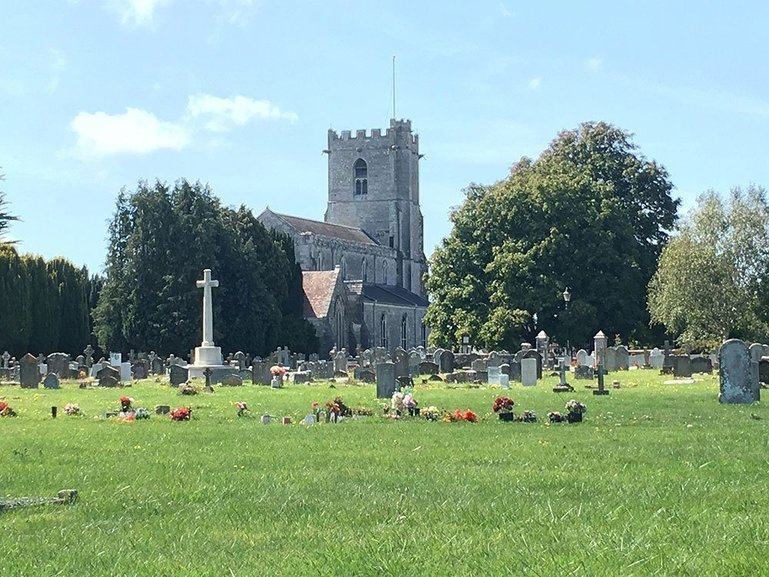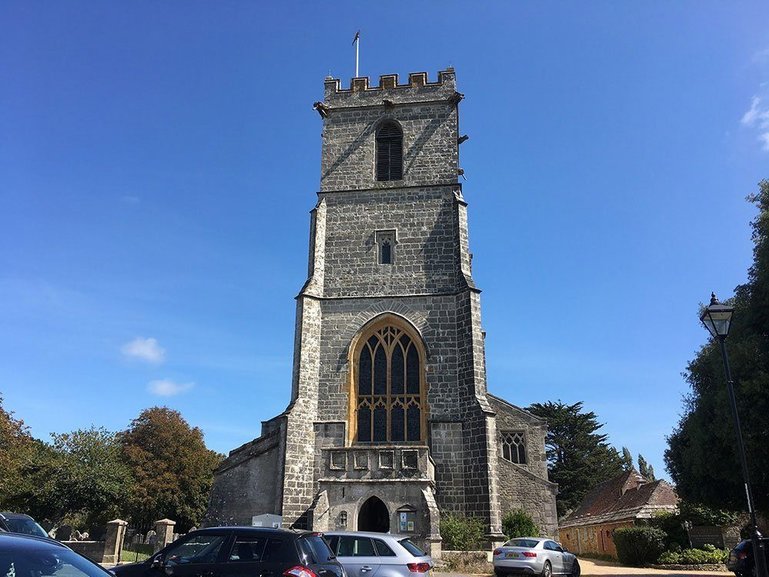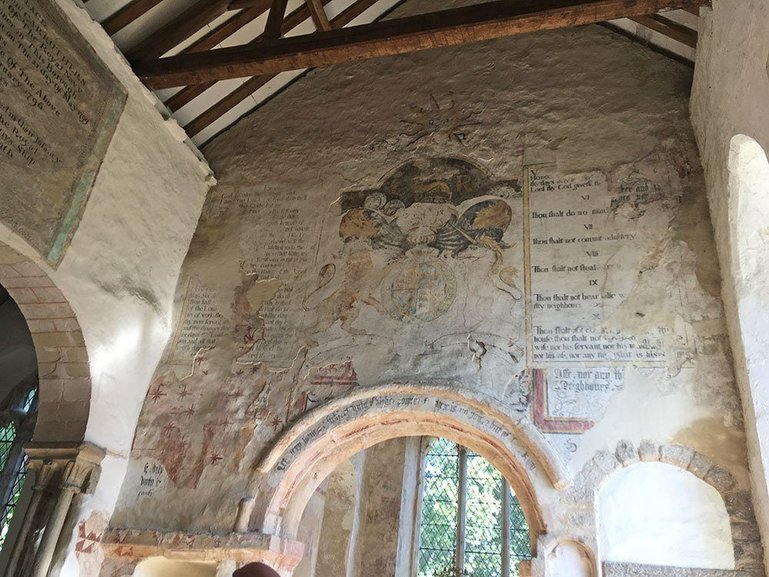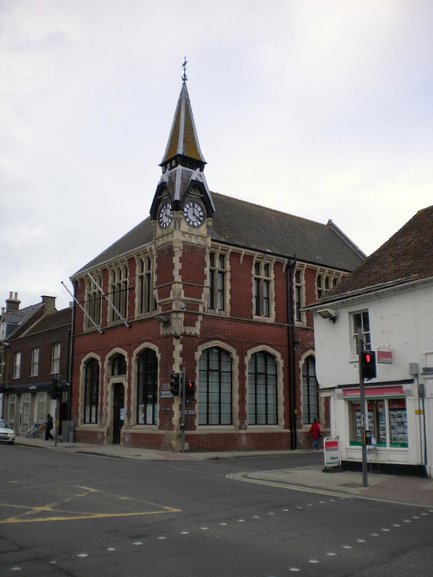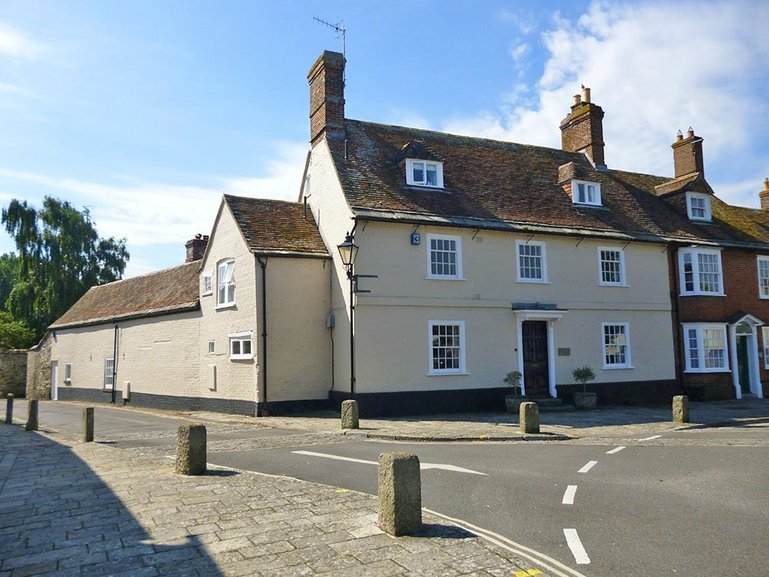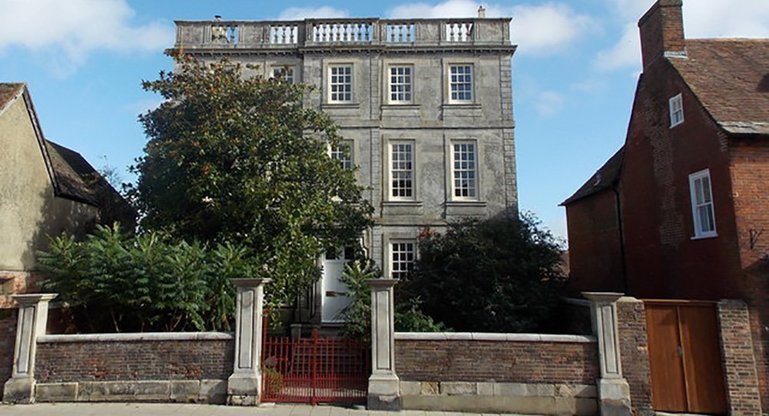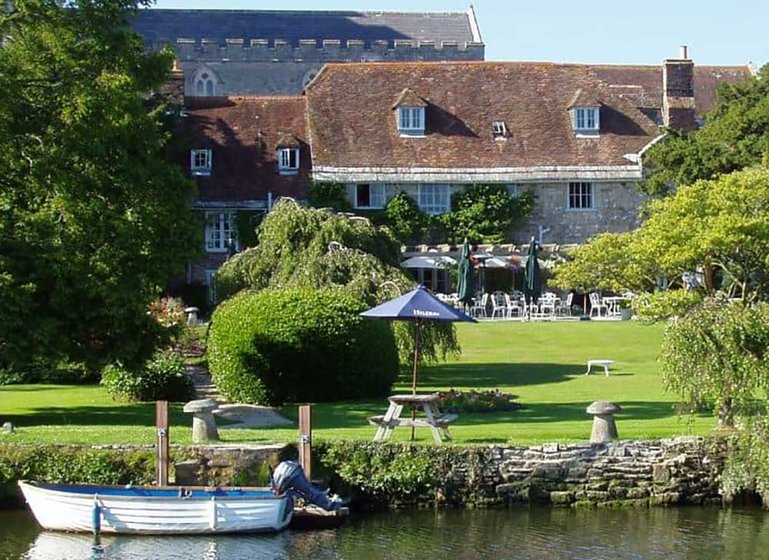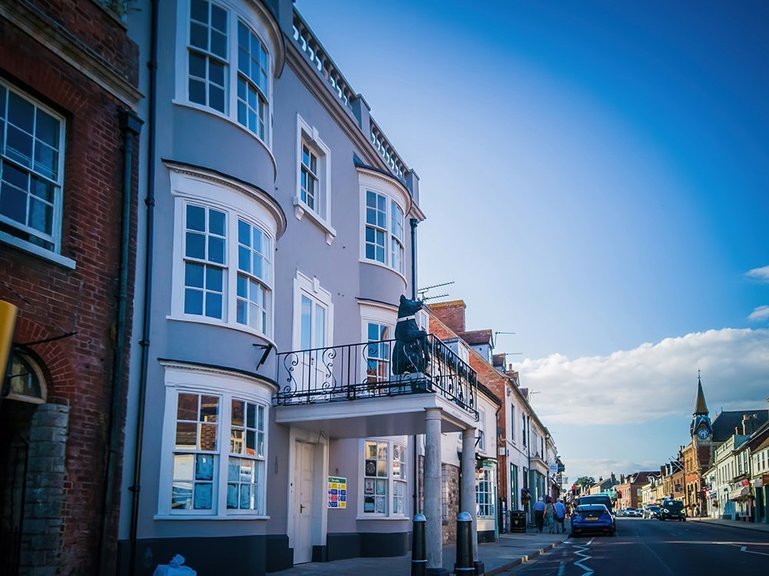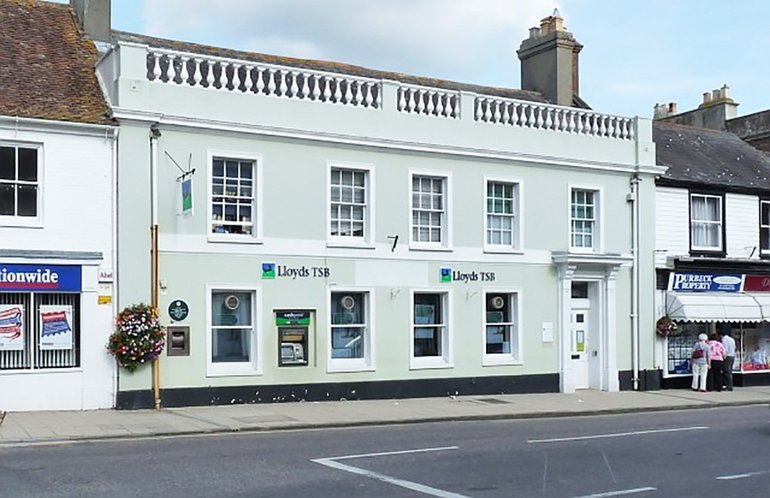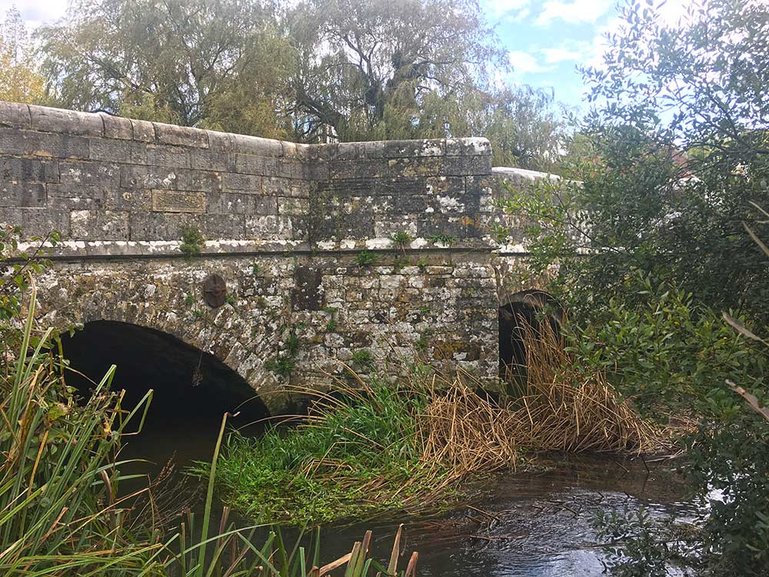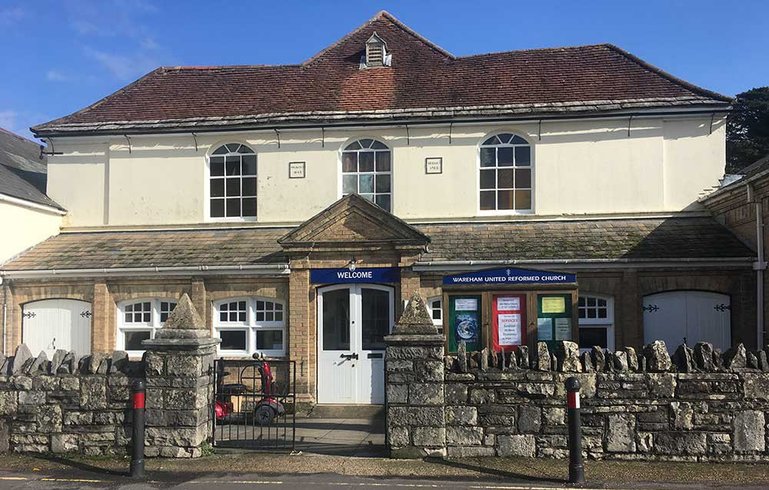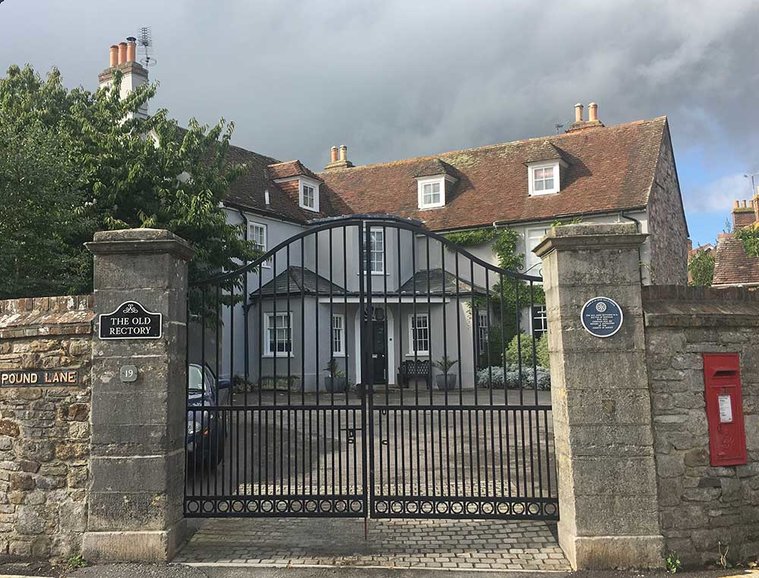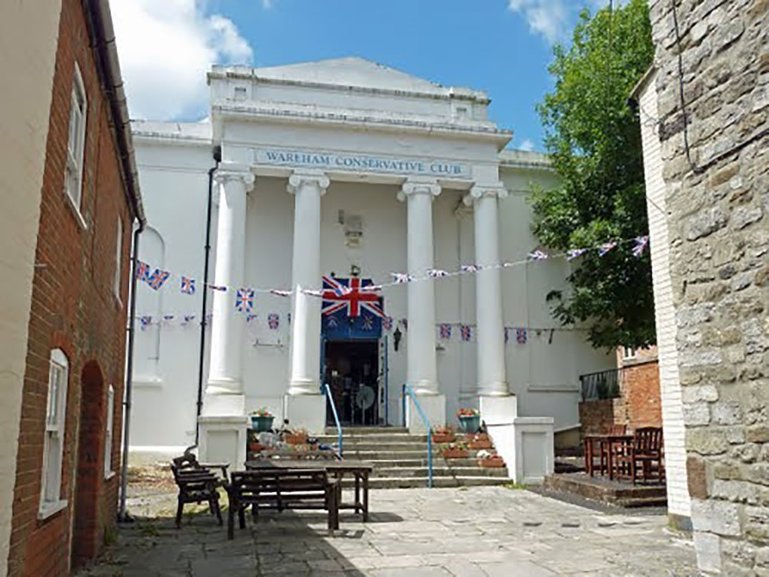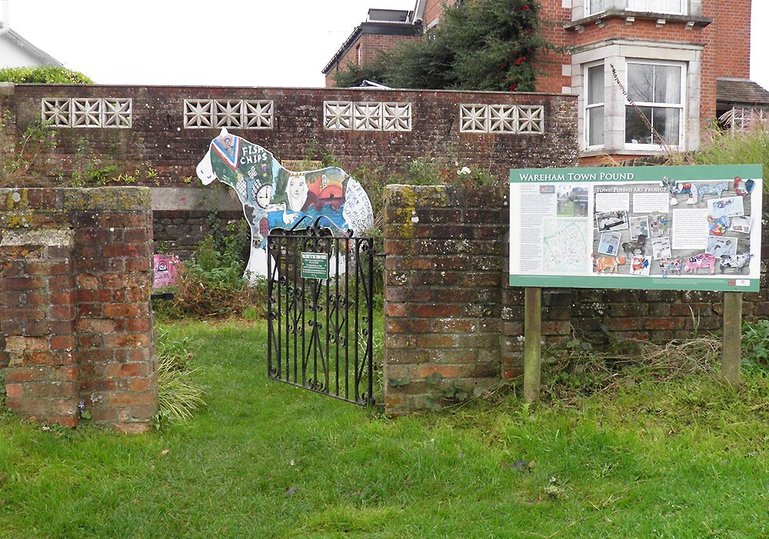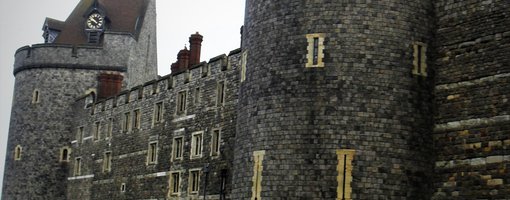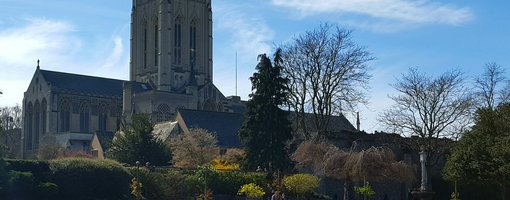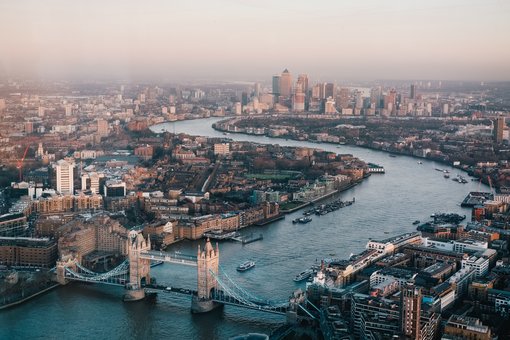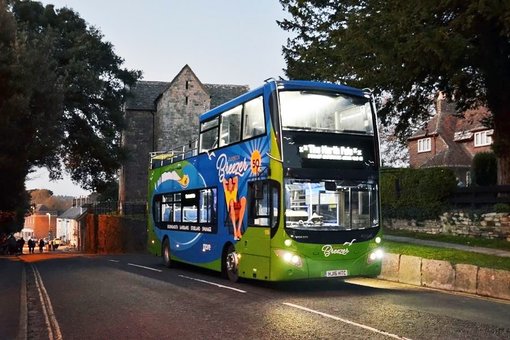There's so much around Wareham to visit and enjoy – a thousand years of history that can be traced in its buildings and streets!
St Mary's Church
Situated on Church Green and built of local Purbeck Stone, St Mary's is the main church of Wareham and its tower dominates the view from across the River Frome. The church was originally built during the Saxon period but was substantially modified during the 19th century.
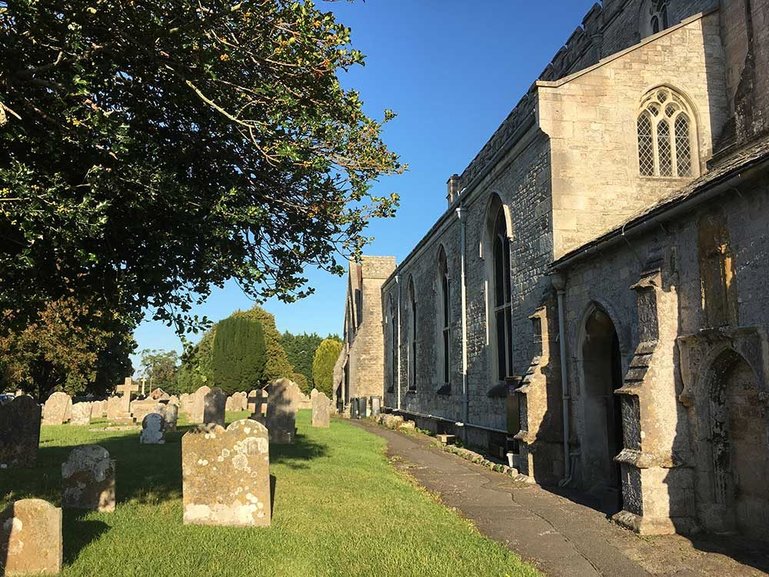
St Mary's Church, Wareham
When visiting St Mary's look out for:
St Edward's Chapel. One of the oldest parts of the church, at a lower level than the rest of the building and dating to the 12th century.
The chancel dates to the 14th century and the west tower probably early 16th century. The stained glass window at the front of the church, installed in 2011, was made by master glazier Andrew Johnson. The church organ dates from the 19th century and was made by Crickmay and Sons of Weymouth.
The 12th century Norman Stone Font which is a rare hexagonal shape, with 12 figures of the Apostles around the bowl. Two 13th century marble effigies of Knights. Various stone fragments found during the 1841 rebuilding which have Brittonic (the celtic language) inscriptions cut into Roman- British limestone fragments.
Burial site of two Saxon Kings. The church is believed to have been the burial site of two Saxon Kings: Beorhtric in 802 and King Edward the Martyr 998.
Events
An annual Flower Festival is held on the second weekend in August. For up to date services, dates and times, see warehamchurches.org.
History of St Mary's
The first church on this site was associated with a nunnery founded by Aldhelm, Bishop of Sherborne in 705 AD. The biographer of King Alfred the Great, Asser also describe a ‘Monasterium of Holy Virgins' within the walls of Wareham which most likely references this site.
The Nunnery was probably destroyed in a Viking raid in 876 but the was rebuilt by the daughter of Alfred, Elfleda in 900 only to be destroyed again by the Viking King Canute in 1015 during his attack on Wareham. It is unknown whether the church associated with the nunnery was damaged during this period.
After the Norman conquest the church was given to a Benedictine Abbey at Lire in Normandy in the early 12th century and a cell of French Benedictine monks settled in Wareham. The church continued to be associated with the Priory until abolished by Henry VIII.
The Saxon nave and aisle, believed to date to 950-1100 were controversially demolished and rebuilt under orders of the Rector in 1841.
Links & Further Reading
Anglo Saxon Churches.co.uk
Interesting article on the features of the original Anglo Saxon Church of St Mary's and the damage caused by the rebuilding in the 19th century.
More details on Wareham's History
10,000 years of history in fact!
St Martin's Church
At over 1000 years old, St Martin's Church in North Street is the most complete example of a Saxon church in Dorset, and its oldest! Locally it's still known as St Martin's-on-the-Walls because of its close proximity to them – though nowadays they're no longer clearly visible nearby.
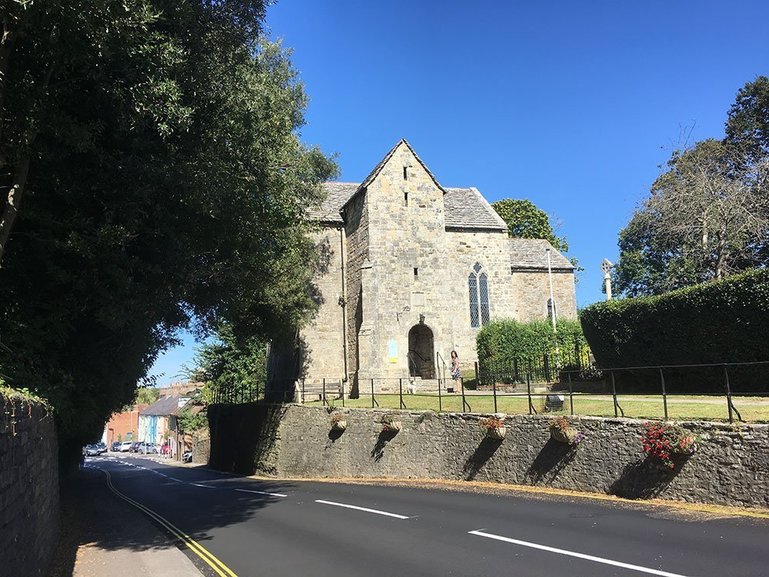
St Martin's Church, Wareham
When visiting St Martin's look out for:
Saxon Architecture
The church has been adapted and enlarged over the centuries but you can still see the original Saxon nave, chancel, wall arcading and traces of a Saxon door.
Frescos
The interior walls are covered in a number of fresco fragments. Above the chancel arch is a fresco of the Royal Arms of Queen Anne dated 1713, flanked by black letter scriptural texts dating from the 1600's, these overlay earlier scripts including some red stars which are believed to indicate plague deaths. On the north wall of the chancel are 12th century frescoes depicting Saint Martin.
Lawrence of Arabia Effigy
St Martin's is also famous for its priceless effigy of TE Lawrence (Lawrence of Arabia). The effigy was sculpted by Eric Kennington, official war artist for both world wars.
Originally the effigy was made for St Paul's Cathedral but controversy around Lawrence and his depiction in Arabic dress resulted in it being refused. The effigy was also offered to Westminster Abbey and Salisbury Cathedral but neither would accept him and hence he was given to Wareham's Saxon church in 1939.
Church Access
For its protection the church is kept locked but the key is available from Joy's Gentlemen's Outfitters, 35 North Street.
History & Links
History of St Martin's
This tiny church was originally on the northern outskirts of Wareham during the Saxon period circa 1020. It was probably rebuilt on the site of an earlier church, founded in the 7th century by Saint Aldhelm and destroyed by the Viking King Canute in 1015.
The church continued to be used until 1678 when all of Wareham's parishes were united and its importance as a place of worship began to slowly decline.
After the 1762 Great Fire of Wareham, for 2 years the church was used as a refuge for the homeless. At this time a fireplace was installed in the north wall of the nave for the refugees. Although the fireplace no longer exists the exterior chimney-stack can still be seen.
Over the next 200 years the building lay abandoned, its windows bricked up and its walls overgrown with ivy. However this abandonment protected the the church from damaging refurbishment project such as the one experienced by the Priory Church of Lady St Mary in Wareham, (see above).
At the beginning of the 20th century interest in the church began and it was eventually restored in 1935-6. Today, the church is once again used for public worship.
Links / further reading:
Dorset's oldest Church
Detailed BBC website page about St Martin's.
In the shadow of the Crescent: Kennington's Lawrence effigy at Wareham
Blog about the artist and sculptor Eric Kennington, the sculptor of T. E. Lawrence's effigy in St. Martin's church.
Wareham Town Hall
At the main crossroads, with its entrance on East Street, can be found Wareham's town hall. Wareham can trace its Mayors back to 1336.
It replaces two earlier buildings. These were the ancient Parish church of St Peter's (whose first priest was recorded in 1321), which itself was converted in 1768 into a town hall, school, jail and butcher's shop.
However, this was then demolished and completely rebuilt in 1870 with funds entirely contributed by the public. The new building, which was designated solely as a town hall, was designed by the well known architect C. R. Crickmay to whom the author Thomas Hardy had been articled. This then is the building we see today.
The ground level is divided up into the Corn Exchange (which is used for social functions, exhibitions and the Farmers' Market), and the Wareham Town Museum. Upstairs is the home of Wareham Town Hall and is also licensed for Weddings and Civil Partnerships ceremonies. For more information about the building uses contact the Town Hall on 01929 553006.
Wareham's ancient mayoral lineage
Wareham is rare in that it can trace its Town Mayors back to 1336, the names are listed on panels in the council chamber. The names were almost lost forever when in 1703 a town clerk absconded to London with the records. The clerk named Nathaniel Child attempted to blackmail for the return of the records. Payment was refused and names boards were created instead, using local records which were themselves destroyed in 1762 during the Great Fire of Wareham.
Wareham's town crest
You may notice the Wareham Town Crest outside the museum near the town hall, (there's an old plaque with it on as you come into town). Decorated with a crescent, star and inverted Fleur de Lys. The Star and Crescent are thought to represent the Stoke family and their involvement in the crusades. The inverted Fleur de Lys has an interesting legend. Apparently King John was angered when he visited Wareham and found no welcoming ceremony. He was so angry he forced the town to invert the Fluer de Lys!
Wareham's Medieval Court Leet
Wareham Town Hall is also rare in that is has one of only two remaining Court Leets in Dorset. A remaining relic of Wareham's medieval history the court is an early form of “trading standards office” which ensured that the traders gave good measure when brewing ale and fair weight when baking bread.
The Court Leet is still presided over today by the Lord of the Manor of Wareham. It endeavours to uphold the more light hearted traditions and inspects local public houses for their beer, food, chimneys and toilets. The Court meets nightly during the last week in November and two pubs are inspected each night from 7 pm. On the Friday when town clock in Wareham strikes 13 at midday the Court Leet delivers its finding at the town hall, members of the public are welcome to watch.
Links / further reading
YouTube links:
Wareham Town Council Manor of Court Leet:
History, archive photographs, etc…
Holy Trinity Church
The building is currently a community cafe serving refreshments, cakes and ice cream. Formerly it was the church of Holy Trinity with a 14th century nave and chancel, 18th century north chapel, and 16th century west tower.
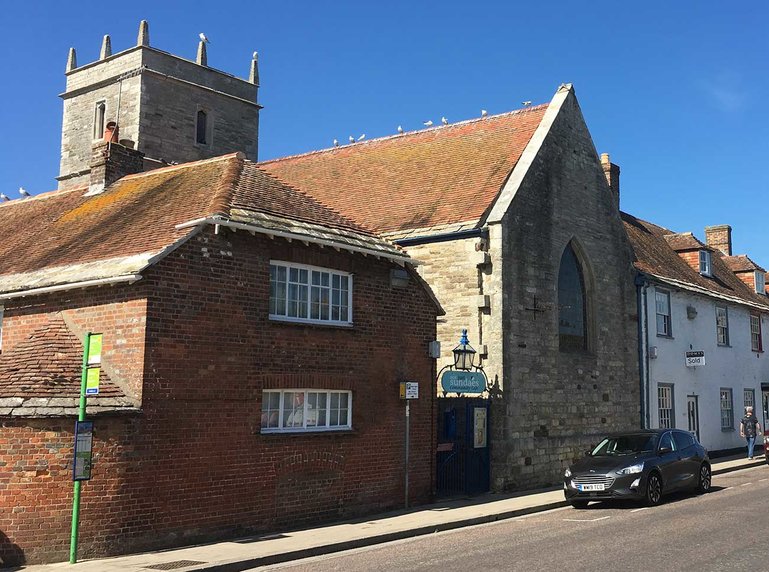
Holy Trinity Church, Wareham
Holy Trinity stood on the site of St Andrew's church. It is believed this building was already in existence when Wareham was a Saxon town guarding the river crossing in the South, (just as St Martin's guarded the north gate).
However, St Andrew's was probably a wooden structure, and in 1137 it was so badly damaged during the fighting that took place during the ‘Anarchy' rebellion, that it was completely rebuilt. Afterwards, it was dedicated to the Holy Trinity, and finally ceased to be used after the fire of 1762.
Streche's Almhouses
A notable building in the town centre is ‘Streche's Almshouse' opposite Wareham Museum in East Street. It bears a plaque dating its foundation in 1418. It is named after John Streche who had them built in order to care for “six ancient men and five women” of Wareham.
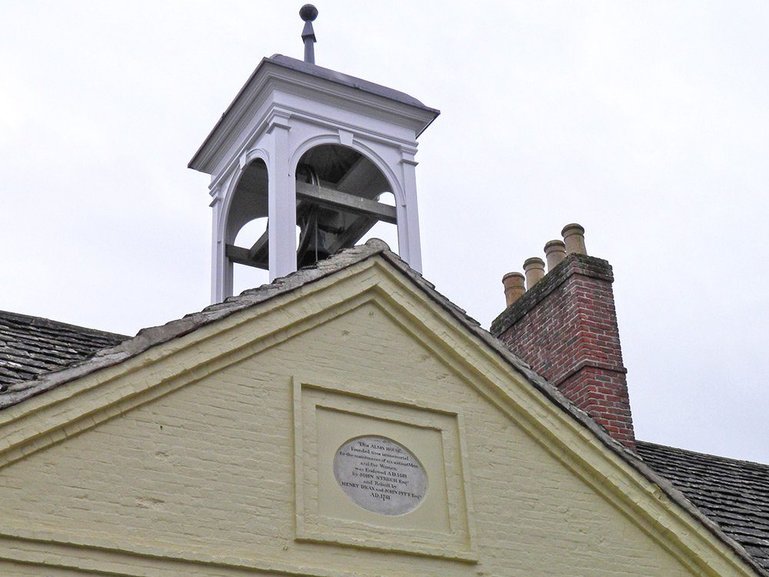
Streche Almshouse, Wareham
Saved by fire insurance
The building was rebuilt in 1741 by Henry Drax and John Pitt, and luckily survived Wareham's great fire of 1762 thanks to being covered by Sun Fire Assurance. This meant that firemen went straight to any buildings displaying Sun Fires plaques. East Street's Streche Almshouses still display the original plaque.
Many buildings didn't escape the fire though, and in order to provide an adequate firebreak the main street was widened. The many charming Georgian properties in Wareham also indicate the amount of rebuilding necessary after the fire, though are in fact disguising earlier buildings which did survive.
Note that the bell tower was originally part of the 1768 Town Hall on the opposite side of the road, and was relocated when the present Town Hall was built in 1870.
The building we see today is currently divided into private flats.
Change of sites
The East Street building ceased to be an almshouse in 1907, when its occupants were transferred to a new much bigger almshouses complex in Worgret Road.
This new site is still in use today and still maintained by a listed charity for ‘for poor persons of good character' called the ‘Almshouse Charity of John Streche'. At the time they were also promised to “receive seven shillings weekly, besides new clothes and beef and coals at Christmas…”
... and there's so much more:
Mint House
Turn left into St. John's Hill and follow the path towards the church. On the south side of this pretty little square is a house with the plaque ‘Gold Court', and it is reputed to stand on the site of Wareham's Saxon mint.
This mint was established by King Athelstan in the early 10th century, and in fact by 1086 the Doomsday Book records that this was one of two mints in the town.
Gold Court is now a Bed & Breakfast.
Manor House
Located on South Street, the Manor House is set back from the street behind a wall and greenery. It is an imposing, three story early Queen Anne style building built in 1712, which has retained most of its original fittings. It is also conspicuous as one of the few non-commercial premises left on the high street.
The Priory Hotel
Nestled between the Lady St Mary church and the banks of the Frome river, the beautiful Priory Hotel stands on the site of a former nunnery founded in the 8th century.
It was destroyed at least once by Viking raiders but by the early 12th century it developed into a Priory, but was eventually dissolved by Henry VIII in 1539. The current building dates to the early 16th century with some later additions.
The Bear Hotel
The Bear Hotel at 14 South Street is a large, imposing coaching inn, with this building dating from 1770, rebuilt after the Great Fire of 1762.
It was formerly known as the Black Bear Hotel, and from that time there has been a life-sized statue of a bear over the entrance porch, a reference to the ancient practice of training bears to perform and dance at Inns. There is also an old legend that the Inn is haunted by a male ghost called Geoffrey (read about it at ghostpubs.com)!
Site of Great Fire
Lloyds Bank stands on the site of The Bull's Head Inn in South Street, the place where the Great Fire of Wareham was started in 1762 which decimated two thirds of the town. There's a plaque outside that records the event.
After that time no thatched cottages were allowed in the town, and the main street was widened.
North Bridge
The town's North bridge has probably carried visitors to Wareham over the River Piddle for centuries. The three arched stone bridge has some lovely views over the river towards Wareham common. Two arches (the rounded ones) date to 1670, and the other more pointed one is even earlier, dating to the 14th or 15th century. There is an interesting warning sign on the bridge which says: "Any person wilfully injuring any part of this county bridge will be guilty of felony and upon conviction liable to be transported for life"!
Old Meeting House
The Wareham United Reformed Church on Church Street is known locally as the 'Old Meeting House'. The beautiful listed building dates from 1762, and all of it, except the west porch, is of this date.
Even today the chapel's denomination is noted as 'Dissenting'. It is one of many Dorset churches founded after the Rector of Wareham refused to comply with the infamous 1662 Act of Uniformity. On Sundays services are led by a variety of preachers from different denominations.
Old Rectory
The old Lady St. Mary rectory's most famous resident - and arguably one of Wareham's most famous - was Reverend John Hutchins, the Rector of Wareham from 1744 to 1773. He compiled his definitive 'History of Antiquities of the County of Dorset' here. There is a plaque commemorating him on the wall outside.
The Rectory was destroyed in the 1762 Great Fire of Wareham and later rebuilt. Also look out for the remain of a Norman arch in the wall, most likely taken from the Wareham Castle after it was destroyed.
Old Unitarian Church
Opposite the Manor House on South Street, set back in a courtyard, is the Wareham Conservative Club. Originally it was built as the Unitarian Church and used as such until the 1960's. It was opened on 29th September 1830 following a split from the Old Meeting House in Church Street in 1828. It is a Grade II building listed as a chapel.
Medieval Town Pound
A small walled enclosure at the top of Pound Lane, near the foot of the town walls, is the site of Wareham's medieval town pound. It was where stray or impounded farm animals were kept. They remained behind a locked gate until reclaimed by the owner - in return for a small fine to the Lord of the Manor!
The Pound was renovated in 2011 as a joint project between Wareham District Development Trust, Purbeck school students, and local illustrator Maria Burns.

